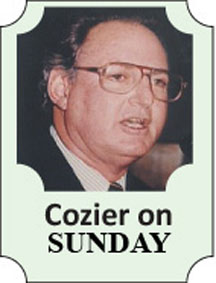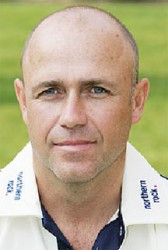Provided they can turn their attention away from events in Bangladesh, and the encouraging warm-up results by both men’s and women’s teams in the World T20, the West Indies Cricket Board (WICB) directors were scheduled to discuss a vital issue at their meeting in Trinidad over the weekend.
President Dave Cameron has set himself and his colleagues what appears nothing less than a mission impossible.
He asserted in a newspaper interview last week that his board considers West Indies’ value to be based on the team’s Test status so that “the plan is clearly to get us back to the top, not just the top three, but number one.”

Cameron now said that “if the West Indies can be a force again in the Test arena, I would feel that strides have been made under my tenure.”
To produce such a transformation calls for a rapid rise in standards on the field, at the same time reigniting the flame among a passionate public, so depressed after years of an unrequited love affair with Test cricket that it has found a new infatuation in the glamorous attraction of the Twenty20 version.
The West Indies presently languish at No.8 on the ICC’s Test rankings, below all the major teams. Since toppled by Australia in 1995 from the top spot they held for 15 years, in which they did not lose a series, they have rarely risen above half-way on the table. They haven’t won a Test against India in their last five series, only one each against Australia and England in their last six.

So how can the heady goal of getting back “not just (to) the top three, but number one”, be achieved?
The board’s directors had before them a plan to establish up what Cameron called “professional structures” which he regards as a priority.
The new director of cricket, the widely-travelled Englishman Richard Pybus, also lists this high on what is required for a turnaround, tied in with lengthening the first-class tournament (presently a maximum of eight matches for the finalists, six for the also rans).
Young players clearly need more experience of the longer game. They also require pitches appreciably better than the slow turners that have become the norm, flattering spinners and draining batsmen of confidence.
Financial security is another consideration.
Last year, the president announced that the WICB would be offering contracts to 60 young up-and-comers, presumably as part of the process of change.
A sum of US$360,000 was provided by the Caribbean Premier League (CPL) for a development plan drafted by Michael Holding, the celebrated fast bowler of an earlier generation who had been appointed a CPL ambassador, with assistance from former Test captain Jimmy Adams.
Nothing more has been heard of the contracts. The money has reportedly gone to 15 players in each of the six WICB members – Barbados, Guyana, Jamaica, the Leewards, Trinidad and Tobago and the Windwards.

Whether that represents development in the sense of the original initiative is open to question; the WICB might regard it as a part of its “professional structures”.
Pybus, formerly in coaching positions in Pakistan (twice), Bangladesh (briefly) and South Africa, arrived last November to find obvious talent but what he called a system well behind those of most other boards.
His primary task is to fix it. It cannot be achieved by waving a magic wand; it is a long-term process, very long-term. At least it had been belatedly recognized and action taken.
The brevity of the first-class season is a continuing problem, especially since opportunities with English counties dried up and, more recently, as the top men were lost to overseas Twenty20 franchises.
One round leading to semi-finals and final limits teams to a maximum of eight matches each; it is hardly ideal for developing Test cricketers, especially as the leading players are often absent on some team or personal overseas assignment.
It is a handicap compounded by slow, turning, unsatisfactory pitches, sometimes doctored to provide home advantage. They flatter bowlers and drain batsmen’s confidence.
In the 2013 tournament, eight totals were below 100, 34 between 100 and 200, just one over 400. There were three individual hundreds in the entire season (there have been five after three and a half rounds this time). Four of the highest wicket-takers in 2013 were spinners, Nikita Miller’s 52 taken at eight runs each.
It is no wonder crowds, for both inter-territorial matches and Tests, have dwindled to virtual nothingness. Whatever the commodity, consumers shun poor quality.
Barbados and Trinidad and Tobago are the oldest and fiercest of sporting rivals, comparable with Lancashire and Yorkshire in England, New South Wales and Victoria in Australia.
There wasn’t so much as minimal marketing and promotion for their current first-class clash at Kensington Oval; just a couple hundred diehards turned up where once there were thousands. They were confined to one stand, the others closed to save on security costs.
The same holds true everywhere – and has done for several seasons. When the Twenty20 CPL comes around in July and August, every gate will be open, every seat taken, as they were last year.
After the West Indies triumphed in the World Twenty20 championship in Sri Lanka in 2012, the Trinidad Express declared that it had “lifted the spirit of the entire region as one”. It was a sentiment not heard since the days of Test dominance under Clive Lloyd.
It would apply again should there be a swift and miraculous turnaround fulfilling the dream of Cameron and every West Indian devotee. Unfortunately, it might just be too late.





